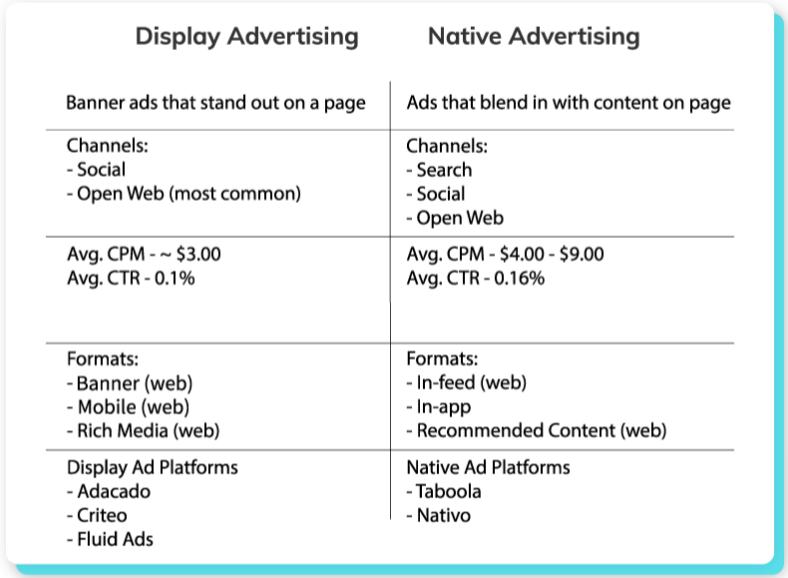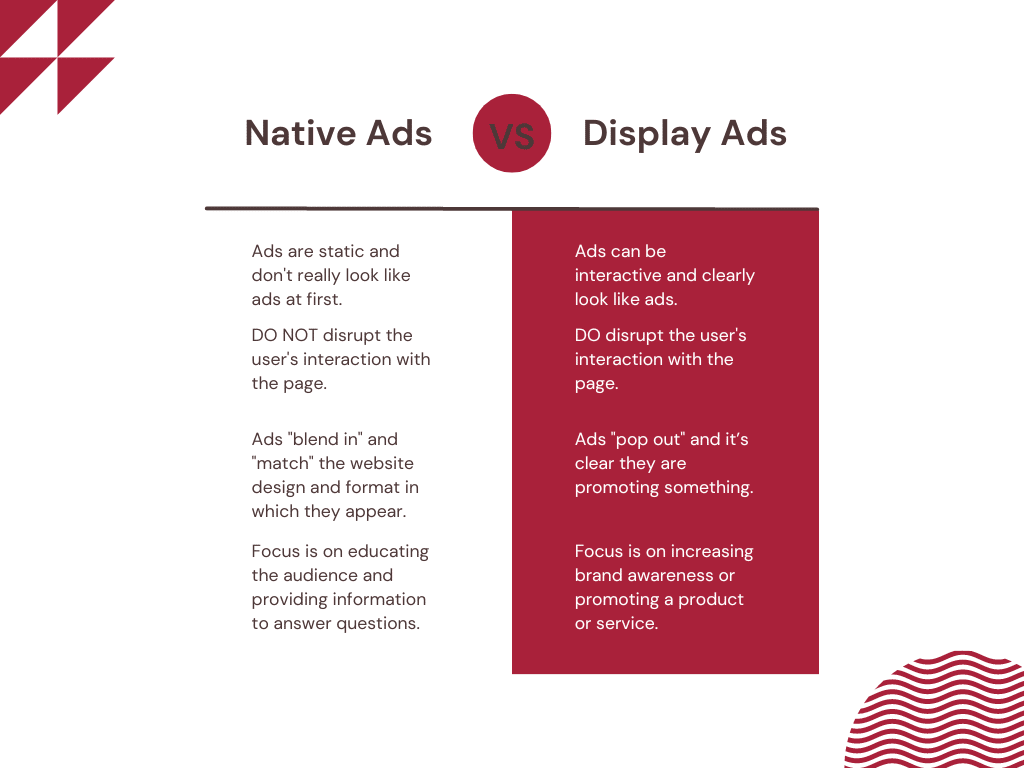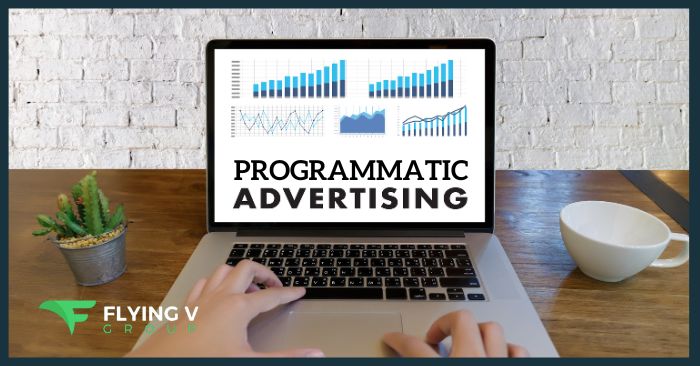Today, we will compare two prominent forms of advertising in the digital landscape: native ads vs display ads.
Both have benefits and drawbacks, and it is crucial for marketers and advertisers to understand their differences.
In this article, we will delve into the pros and cons of native ads and display ads, explore their effectiveness, and provide insights on leveraging these advertising formats to achieve optimal results.
So, if you want to make informed decisions about your digital advertising strategy, read on!
- Understanding The Basics: Native ads vs Display ads
- Comparing Effectiveness: Which Type of Ad Performs Better?
- Tips for Implementing Native Ads vs Display Ads Effectively
- Choosing the Suitable Ad Format for Your Digital Advertising Strategy: Native Ads vs Display Ads
- FAQ Section
- 1. What is the primary difference between native ads and display ads?
- 2. Are there specific platforms where native ads or display ads are more effective?
- 3. Are there specific industries where one ad format outperforms the other?
- 4. How does the cost structure differ between native vs display advertising?
- 5. How can businesses optimize their campaigns based on this analysis?
Understanding The Basics: Native ads vs Display ads

Image from Adacado
Before we dive into a detailed comparison of native ads vs display ads, it is essential to understand the basics of these two advertising formats.
Native ads mimic the look and feel of the content surrounding them, blending seamlessly into the user experience of a website or app.
They are often non-disruptive and appear in sponsored articles, product recommendations, or promoted posts on social media.
On the other hand, display ads are visually eye-catching and attention-grabbing advertisements placed in designated spaces on websites or apps.
Display ads come in various formats, such as banners, pop-ups, and video ads, and are specifically designed to stand out from the surrounding content.
Comparing Effectiveness: Which Type of Ad Performs Better?

Image from Millennium Agency
Now that we grasp the basic concepts of native ads and display ads, let’s explore their effectiveness and compare their performance.
Native ads have gained popularity in recent years due to their seamless integration with the user experience. This integration often leads to higher engagement and click-through rates than display ads.
By appearing as part of the platform’s content, native ads are more likely to be perceived as valuable information rather than intrusive advertising.
Additionally, native ads have a longer lifespan since they remain accessible even when the initial campaign ends, contributing to continued exposure.
However, display ads are known for catching the viewer’s attention. Their visually appealing designs and interactive elements effectively drive initial brand awareness.
Display ads benefit businesses looking to make a solid visual impact or push a limited-time promotion.
Cost Considerations
As digital advertisers, we must analyze the investment required for each ad format to determine which provides the most value for our advertising goals.
The cost of native ads can vary depending on factors such as the platform, ad placement, and the level of customization required. They often involve collaboration with publishers or content creators, which can add to the overall cost.
However, the return on investment (ROI) for native ads tends to be higher due to the higher engagement rates and longer lifespan.
Display ads usually follow a cost-per-thousand-impression (CPM) pricing model. The cost of display ads can vary depending on factors such as ad size, ad placement, and the target audience.
Generally, display ads are more cost-effective regarding reach and impressions, making them ideal for businesses looking to create brand awareness.
Target Audience Reach
For native ads, targeting options are typically more advanced and allow for precise audience segmentation.
Through collaboration with publishers and content creators, you can strategically place native ads where our target audience will most likely engage with them. You can use demographic, behavioral, and contextual targeting features to ensure our message resonates with the right people.
Display ads also offer various targeting options to ensure optimal audience reach. You can target your display ads based on demographics, interests, location, and browsing behavior.
Using these targeting options, you can effectively reach a large audience and create brand awareness.
User Experience
User experience is a critical factor to consider when evaluating the effectiveness of native ads and display ads in digital advertising. Both formats have unique characteristics that influence how users perceive and interact with them.
Since native ads integrate naturally into the platform, they are less likely to be perceived intrusive or annoying. This can result in higher engagement rates and a more positive user experience.
Display ads are more visually striking and can grab users’ attention with vibrant colors and eye-catching designs.
However, some users may find it distracting or overwhelming, especially if they appear in excessive numbers or obstruct the content they are trying to view.
Measuring Success
With native ads, the traditional metrics used to evaluate display ads may not be applicable. Instead of relying solely on click-through rates, advertisers must consider engagement metrics such as time spent on the page, scroll depth, and social shares.
These metrics can provide valuable insights into how well the native ads resonate with the audience and drive meaningful interactions.
Click-through rates remain a key metric to evaluate the performance of display ads. Viewability and conversion rates also determine the impact of display ads on the audience.
A high viewability rate ensures that users see the ads, while conversion rates indicate whether the ads drive the desired actions.
Tips for Implementing Native Ads vs Display Ads Effectively
Understanding your target audience and tailoring your ads to their preferences and behaviors is crucial.
Conduct thorough market research to gain insights into your audience’s demographics, interests, and online habits.
This information will help you create ads that resonate with your target audience and drive engagement.
When implementing native ads, focus on creating content that seamlessly integrates with the platform’s user experience.
The ads should provide value to the audience while aligning with the context and tone of the surrounding content.
Design visually appealing creatives for display ads that grab attention and convey your message effectively. Use eye-catching visuals, compelling copy, and clear call-to-action to entice users to click.
It’s also essential to optimize your ads for different screen sizes and devices, ensuring optimal display across desktop, mobile, and tablet devices.
Furthermore, you should regularly monitor and analyze the performance of your ads using the appropriate metrics discussed earlier.
Choosing the Suitable Ad Format for Your Digital Advertising Strategy: Native Ads vs Display Ads
After thoroughly analyzing native ads vs display ads, it’s clear that both formats have strengths and weaknesses.
A successful digital advertising strategy involves a well-balanced approach that utilizes the strengths of both native ads and display ads.
The big question is, which ad format should you choose for your digital advertising strategy? The answer lies in understanding your campaign objectives and target audience.
Display ads are a great option to build brand awareness and reach a broad audience. However, if you prioritize user engagement and want to deliver a more personalized experience, native ads are the way to go.
Remember, there is no one-size-fits-all solution. Together, we can help you choose the most suitable ad format for your upcoming marketing strategy.
FAQ Section
1. What is the primary difference between native ads and display ads?
Native ads are designed to blend seamlessly with the platform’s content, resembling editorial material, allowing users to engage with the content. However, display ads are visually distinct and typically appear as banners or sidebars. They can be more intrusive and attention-grabbing but may also be perceived as more interruptive by users. Overall, both serve as effective ways for advertisers to communicate their message to consumers.
2. Are there specific platforms where native ads or display ads are more effective?
The effectiveness of ads depends on the platform and audience behavior. Native ads have been known to perform exceptionally well on social media platforms due to their non-intrusive nature that blends seamlessly with organic content. Display ads excel on websites with visually appealing content, as they are more likely to catch the audience’s attention and drive engagement.
3. Are there specific industries where one ad format outperforms the other?
Yes, the effectiveness of native ads vs display ads can vary by industry. Native ads may excel in content-driven industries, while display ads may be preferred in e-commerce for their visual prominence.
4. How does the cost structure differ between native vs display advertising?
The cost structure varies; native ads may have a higher initial cost, but display ads often have lower click costs. The overall cost-effectiveness depends on campaign goals.
5. How can businesses optimize their campaigns based on this analysis?
Businesses can optimize campaigns by aligning their goals with the strengths of each format, understanding their target audience, and continually analyzing performance metrics to refine strategies.






0 Comments